Ajita John
ET-LDA: Joint Topic Modeling for Aligning Events and their Twitter Feedback
Dec 21, 2012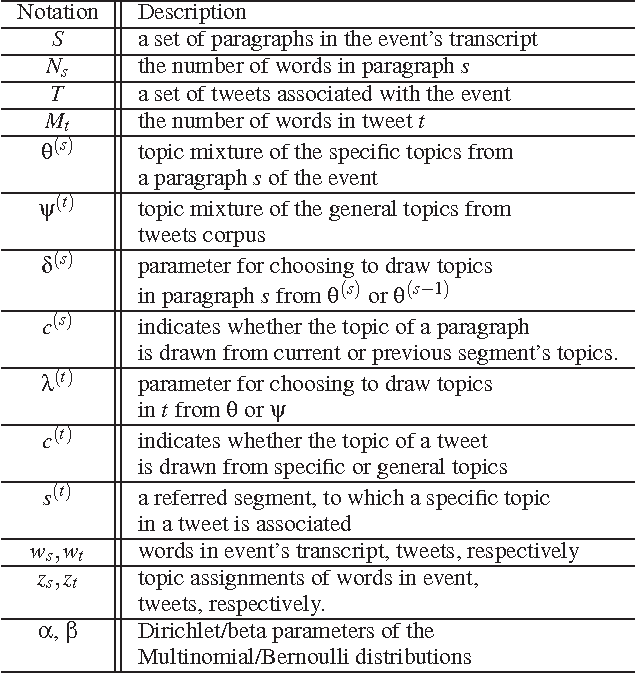



Abstract:During broadcast events such as the Superbowl, the U.S. Presidential and Primary debates, etc., Twitter has become the de facto platform for crowds to share perspectives and commentaries about them. Given an event and an associated large-scale collection of tweets, there are two fundamental research problems that have been receiving increasing attention in recent years. One is to extract the topics covered by the event and the tweets; the other is to segment the event. So far these problems have been viewed separately and studied in isolation. In this work, we argue that these problems are in fact inter-dependent and should be addressed together. We develop a joint Bayesian model that performs topic modeling and event segmentation in one unified framework. We evaluate the proposed model both quantitatively and qualitatively on two large-scale tweet datasets associated with two events from different domains to show that it improves significantly over baseline models.
ET-LDA: Joint Topic Modeling For Aligning, Analyzing and Sensemaking of Public Events and Their Twitter Feeds
Dec 21, 2012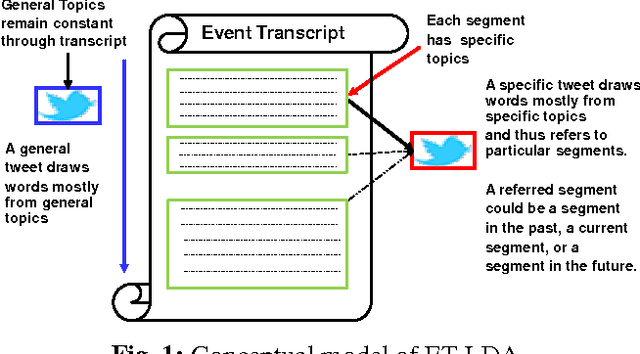
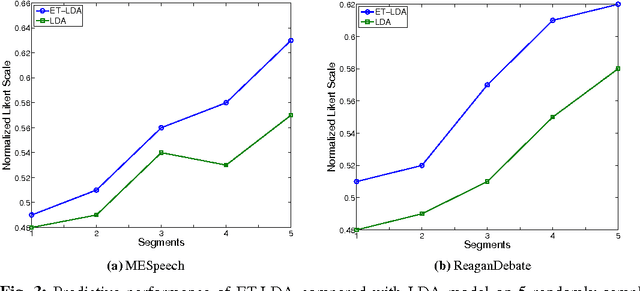
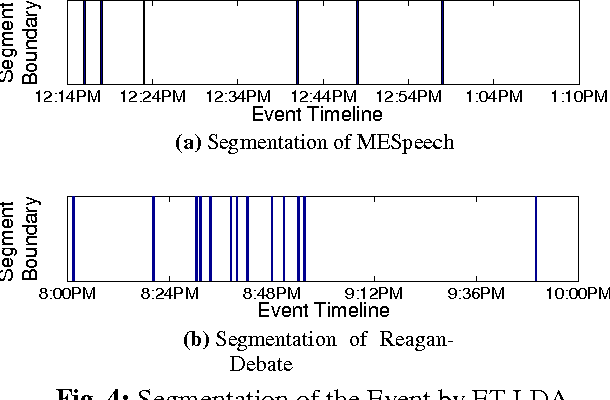
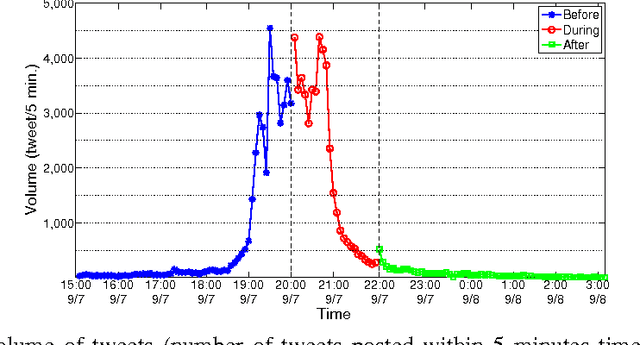
Abstract:Social media channels such as Twitter have emerged as popular platforms for crowds to respond to public events such as speeches, sports and debates. While this promises tremendous opportunities to understand and make sense of the reception of an event from the social media, the promises come entwined with significant technical challenges. In particular, given an event and an associated large scale collection of tweets, we need approaches to effectively align tweets and the parts of the event they refer to. This in turn raises questions about how to segment the event into smaller yet meaningful parts, and how to figure out whether a tweet is a general one about the entire event or specific one aimed at a particular segment of the event. In this work, we present ET-LDA, an effective method for aligning an event and its tweets through joint statistical modeling of topical influences from the events and their associated tweets. The model enables the automatic segmentation of the events and the characterization of tweets into two categories: (1) episodic tweets that respond specifically to the content in the segments of the events, and (2) steady tweets that respond generally about the events. We present an efficient inference method for this model, and a comprehensive evaluation of its effectiveness over existing methods. In particular, through a user study, we demonstrate that users find the topics, the segments, the alignment, and the episodic tweets discovered by ET-LDA to be of higher quality and more interesting as compared to the state-of-the-art, with improvements in the range of 18-41%.
 Add to Chrome
Add to Chrome Add to Firefox
Add to Firefox Add to Edge
Add to Edge